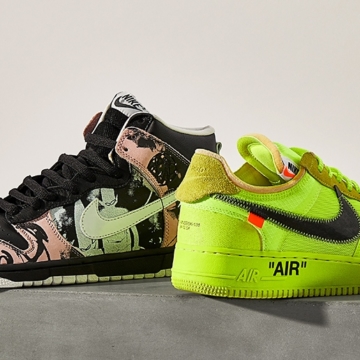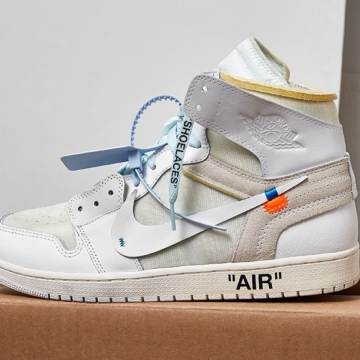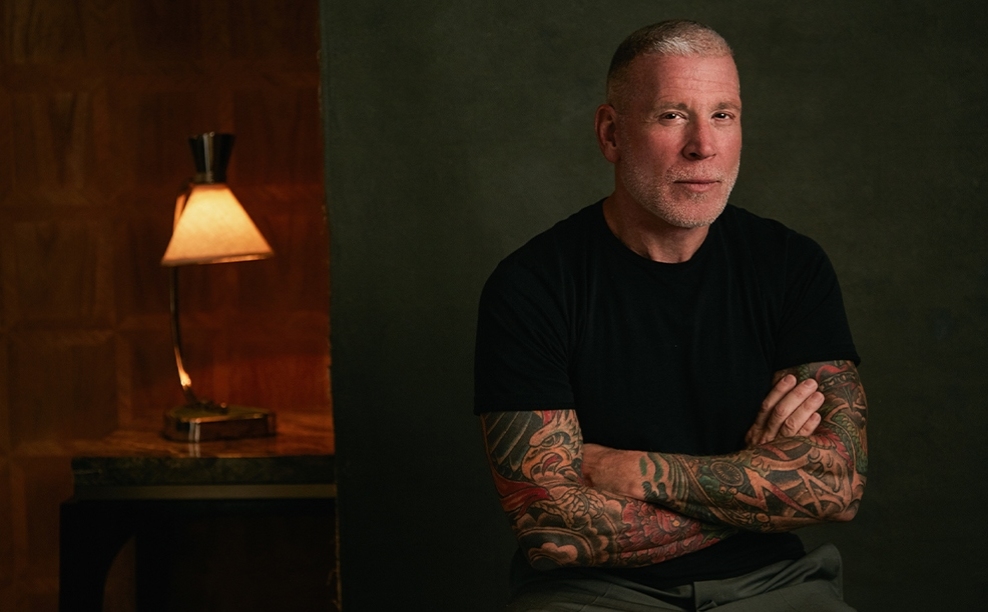
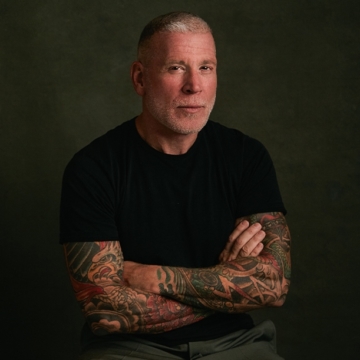
How a Fervent Menswear Collector Nick Wooster Declutters In 2020
He was once described by a venerable publicity executive as the “Cher of men’s fashion”.
Before the advent of social media, after decades working in the men’s wear industry— from buying for Barneys New York and Bergdorf Goodman to retail for Calvin Klein and design for Ralph Lauren — Nickelson “Nick” Wooster had well earned his stripes in the business. But it was the onset of the street-style phenomenon in 2010, fueled by the popularity of photo-sharing platforms, when he became one of the most prominent male figures to come out of the scene. Indeed, thanks to the rise of image-sharing, Wooster reached men’s-wear mensch stardom as he was continuously photographed worldwide in carefully tailored Thom Browne suits, sartorial camouflage, Rick Owens drop-crotch shorts, patchwork Comme des Garçons Homme Plus blazers and many eye-grabbing pieces of outerwear.
Ten years later, and Wooster— who has since then amassed close to 800,000 fervent fashion followers on Instagram— has taken a moment to reflect on his peripatetic fashion experiences. “Never in my life would I have thought that someone with my background could be a freelance person,” he said over a phone call. “And yet my projects have taken me around the world, primarily in Asia and Europe.” His work these past few years as a self-proclaimed “free agent,” has seen Wooster traverse the globe— from shows in European fashion capitals to collaboration projects in Japan —with unimaginable access to some of men’s-wear’s most covetable and exclusive product.
So what does a fashion obsessive do when he is exposed to the very best from far-flung pockets around the world? “I’ve collected,” he said. “What some people may call hoarding, I call collecting.”
Fashion is a business of consumption — much to the industry’s (and the climate’s) dismay — and Mr. Wooster has not been immune to the thrill of the purchase. “I have been a rabid consumer and have been rabidly consuming around the world since basically 2013,” he noted. What that results in is a personal closet — converted from the master bedroom of his luxury apartment in the Hudson Yards area of New York — teeming with multiple pairs of sneakers in various color-ways, duplicate garments from past collaborations he has worked on with brands like Paul & Shark and Lardini, and a surfeit of desirable runway items he’s previously worn just a handful of times. “I always buy clothes as objects,” he explained. “So many things that I have purchased are because I fell in love with the item. Because I like its color, I like its fabric, there’s something that I like.”
During these peculiar times when it seems everyone is hunkered at home and reorganizing their closets, Mr. Wooster, too, has decided to declutter his extensive wardrobe. As Cher throughout her career continued to transform her style to reflect the times, Mr. Wooster has taken stock of his own sartorial proclivities over the years and is looking to streamline. “I’m turning 60 this year and I’ve never been a believer in ‘You’re too young for that, you’re too old for that’, and I still don’t subscribe to any of that,” he said. “But, as I look at my old street-style photographs, the images I was more struck by were the more classic.”
Here, Mr. Wooster discusses his summer consignment, his love of men’s shorts, the benefits of the circular economy, and the future of street style.
A Cashmere Sweater Compelled Nick Wooster To Start A Career in Fashion.
“I’ve been around and I’ve been obsessed with clothes all my life. From the time I was five years-old my mom could not dress me, but it never occurred to me that there was a fashion business. I started working in a clothing store when I was 16 years-old because my mom refused to buy me a cashmere sweater. I didn’t know what it was but since I had worked at the store I knew what a buyer was, I thought, ‘Okay, well that’s it.’ You know, I don’t draw or sew, so about the only thing that I could do is be a buyer. And so that’s the track I took.”
He Built The Closet Of His Dreams.
“Let’s put it this way: I moved into a two-bedroom apartment in 2016 — the one I am living in now — and I converted the master bedroom into a closet that is perfectly merchandised just for me. Floor-to-ceiling of just one season — I actually have more fall in storage — but this is just spring. So everything that’s consigned is what I had here. If you were to walk in you would have no idea that I got rid of almost 500 items.”
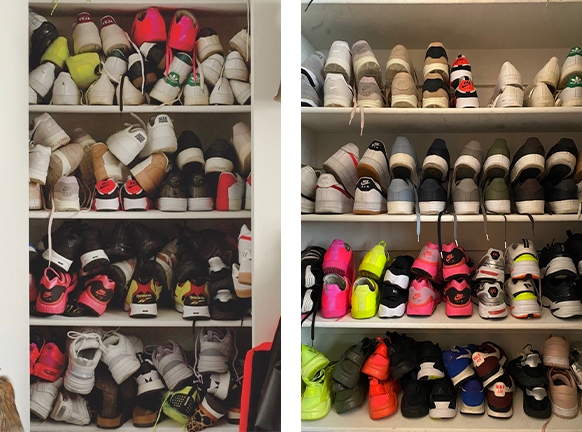
Consigning Helped Him Declutter That Dream Closet
“If I had unlimited funds, I could warehouse and I could catalog, and I could do a thousand other things, but I find this current moment has shone a light on consumption in a different way. Maybe it was last year with Greta Thunberg that I started to think that there is too much consumption. But I know of people — some of them young kids— who have purchased the things that I have consigned previously. And so in a way it’s like an opportunity to give my clothing a second life, to keep it going. You know, I was lucky enough to be able to get these things and I’m happy to pass them along if there’s an audience for it.”
Nick Wooster’s Keep-Or-Consign Philosophy. First, What To Consign:
“There’s really probably two reasons why I would get rid of something. One is, it no longer fits. I have yo-yoed all my life— sometimes I’m slim, sometimes I’m a little thicker, and sometimes some things just don’t fit. And second: it just wasn’t a good idea to begin with. Obviously there was a reason why I bought it, but not everything looks great on everybody. I have learned that the expensive way.”
And, What To Keep:
“I would have to say, the more classic things — unless they don’t fit any longer— are the kinds of things that I feel more compelled to keep these days… but at the same time I’ve got plenty of crazy things that I’m keeping that I just can’t part with!”
For Example, Shorts. Nick Wooster Loves Shorts
“I’ll happily say shorts are my favorite category. I loved shorts as a kid and I love shorts as a 60-year-old. I understand many people— New Yorkers, people in Paris and London— have a huge problem with shorts, I get it. For me, shorts are like skirts. And what I mean by that is in the same way that a woman has a million kinds of skirts in her wardrobe, shorts do exactly the same thing for me. So I like to have many shorts for many moods. I love the idea of the dress short, meaning something that would be in a suiting fabric or wool but not treated as a suit. I love that contrast and I think Comme des Garçons does that the best.”
Wooster Is Consigning An Object From Men’s Fashion History
“It was one of those seminal kind of fashion moments. There aren’t as many of those in men’s wear as there tend to be in women’s, but the Louis Vuitton x Supreme show was definitely one of them. That bag to me was super iconic. It is super iconic. Also, a Vuitton bag is an amazing object as is.”
So Why Get Rid Of It?!
“There were probably two main reasons. One is: I used it and I felt like it was a period of my life and that chapter is probably closing, so I felt like an opportunity to move on. And the second is a cultural incentive. I know that not everyone was able to get one of these bags and so if I’m giving an opportunity for someone to get one now, I think that would be super cool.
“And maybe I’ll use the money to find something I always wanted: the Louis Vuitton x Stephen Sprouse graffiti bags.”
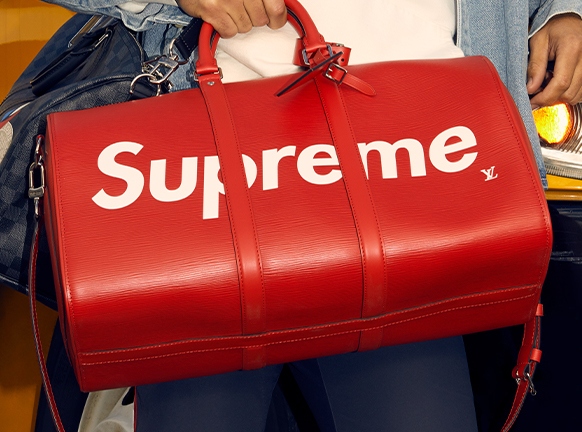
His Take On The State Of Street Style:
“People always dressed up for fashion events, that’s not new. But maybe it went on steroids in the last five-to-ten years. I mean, in a certain way, street style became not a joke, but a sideshow. But before street style, there was Bill Cunningham and what he did is he chronicled as a journalist the comings and goings of people. Maybe that should be the role of street style: this kind of reportage. And it will be really authentic because it will be about what real people are doing. People continue to be interested today in what we wear, in what anyone wears. And so there will be the need for that communication, but I think it will— let’s just say— calm down.”
Wooster’s Last Words On His Consignment:
Every one of those pieces that I’m consigning I had a hand in selecting. And so I feel very attached; they’re a part of me. I don’t want anyone to feel like, “Oh, he doesn’t like that anymore.” It’s not like that at all. I’ve consumed too much and I feel it’s more important to let someone else have an opportunity.”


